Disparities Dashboard
The Disparities Dashboard allows you to view all indicators that include breakout data by topics such as race/ethnicity, age and gender. The subgroup data charts are displayed below the overall indicator value. Breakout values that are significantly better or worse than the overall value will be highlighted in green or red.
Indicator Gauge Icon Legend
Legend Colors
Red is bad, green is good, blue is not statistically different/neutral.
Compared to Distribution
 the value is in the best half of communities.
the value is in the best half of communities.
 the value is in the 2nd worst quarter of communities.
the value is in the 2nd worst quarter of communities.
 the value is in the worst quarter of communities.
the value is in the worst quarter of communities.
Compared to Target
 meets target;
meets target;  does not meet target.
does not meet target.
Compared to a Single Value
 lower than the comparison value;
lower than the comparison value;
 higher than the comparison value;
higher than the comparison value;
 not statistically different from comparison value.
not statistically different from comparison value.
Trend

 non-significant change over time;
non-significant change over time; 
 significant change over time;
significant change over time;  no change over time.
no change over time.
Compared to Prior Value
 higher than the previous measurement period;
higher than the previous measurement period;
 lower than the previous measurement period;
lower than the previous measurement period;
 no statistically different change from previous measurement period.
no statistically different change from previous measurement period.
 Significantly better than the overall value
Significantly better than the overall value
 Significantly worse than the overall value
Significantly worse than the overall value
 Significantly different than the overall value
Significantly different than the overall value
 No significant difference with the overall value
No significant difference with the overall value
 No data on significance available
No data on significance available
State: Ohio
Health / Alcohol & Drug Use



State: Ohio Teens who Binge Drink: High School Students
State: Ohio Teens who Binge Drink: High School Students
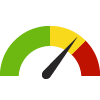


State: Ohio Teens who have Used Methamphetamines
State: Ohio Teens who have Used Methamphetamines
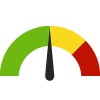

State: Ohio Teens who Use Alcohol
State: Ohio Teens who Use Alcohol



State: Ohio Teens who Use Marijuana: High School Students
State: Ohio Teens who Use Marijuana: High School Students
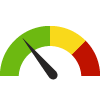


State: Ohio
Health / Cancer
State: Ohio Age-Adjusted Death Rate due to Breast Cancer
State: Ohio Age-Adjusted Death Rate due to Breast Cancer
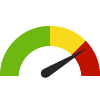




State: Ohio Age-Adjusted Death Rate due to Cancer
State: Ohio Age-Adjusted Death Rate due to Cancer





State: Ohio Age-Adjusted Death Rate due to Colorectal Cancer
State: Ohio Age-Adjusted Death Rate due to Colorectal Cancer





State: Ohio Age-Adjusted Death Rate due to Lung Cancer
State: Ohio Age-Adjusted Death Rate due to Lung Cancer





State: Ohio Age-Adjusted Death Rate due to Prostate Cancer
State: Ohio Age-Adjusted Death Rate due to Prostate Cancer





State: Ohio All Cancer Incidence Rate
State: Ohio All Cancer Incidence Rate




State: Ohio Breast Cancer Incidence Rate
State: Ohio Breast Cancer Incidence Rate




State: Ohio Cancer: Medicare Population
State: Ohio Cancer: Medicare Population




State: Ohio Cervical Cancer Incidence Rate
State: Ohio Cervical Cancer Incidence Rate




State: Ohio Colorectal Cancer Incidence Rate
State: Ohio Colorectal Cancer Incidence Rate




State: Ohio Lung and Bronchus Cancer Incidence Rate
State: Ohio Lung and Bronchus Cancer Incidence Rate




State: Ohio Mammography Screening: Medicare Population
State: Ohio Mammography Screening: Medicare Population




State: Ohio Oral Cavity and Pharynx Cancer Incidence Rate
State: Ohio Oral Cavity and Pharynx Cancer Incidence Rate




State: Ohio Prostate Cancer Incidence Rate
State: Ohio Prostate Cancer Incidence Rate




State: Ohio
Health / Diabetes
State: Ohio Age-Adjusted Death Rate due to Diabetes
State: Ohio Age-Adjusted Death Rate due to Diabetes


State: Ohio Diabetes: Medicare Population
State: Ohio Diabetes: Medicare Population




State: Ohio
Health / Disabilities
State: Ohio Adults with an Independent Living Difficulty
State: Ohio Adults with an Independent Living Difficulty



State: Ohio Children with a Disability
State: Ohio Children with a Disability


State: Ohio Persons with a Cognitive Difficulty
State: Ohio Persons with a Cognitive Difficulty


State: Ohio Persons with a Disability
State: Ohio Persons with a Disability


State: Ohio Persons with a Hearing Difficulty
State: Ohio Persons with a Hearing Difficulty


State: Ohio Persons with a Self-Care Difficulty
State: Ohio Persons with a Self-Care Difficulty


State: Ohio Persons with a Vision Difficulty
State: Ohio Persons with a Vision Difficulty


State: Ohio Persons with an Ambulatory Difficulty
State: Ohio Persons with an Ambulatory Difficulty


State: Ohio
Health / Family Planning
State: Ohio Teens who have ever had Sexual Intercourse
State: Ohio Teens who have ever had Sexual Intercourse



State: Ohio
Health / Health Care Access & Quality
State: Ohio Adults with Health Insurance
State: Ohio Adults with Health Insurance
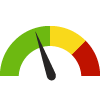



State: Ohio Children with Health Insurance
State: Ohio Children with Health Insurance




State: Ohio Community Spending on Health Care
State: Ohio Community Spending on Health Care


State: Ohio Health Insurance Spending-to-Income Ratio
State: Ohio Health Insurance Spending-to-Income Ratio


State: Ohio Persons with Health Insurance
State: Ohio Persons with Health Insurance




State: Ohio Persons with Private Health Insurance Only
State: Ohio Persons with Private Health Insurance Only



State: Ohio Persons with Public Health Insurance Only
State: Ohio Persons with Public Health Insurance Only



State: Ohio Persons without Health Insurance
State: Ohio Persons without Health Insurance


State: Ohio Preventable Hospital Stays: Medicare Population
State: Ohio Preventable Hospital Stays: Medicare Population




State: Ohio
Health / Health Information Technology
State: Ohio Persons with an Internet Subscription
State: Ohio Persons with an Internet Subscription



State: Ohio
Health / Heart Disease & Stroke






State: Ohio Age-Adjusted Death Rate due to Heart Attack
State: Ohio Age-Adjusted Death Rate due to Heart Attack


State: Ohio Atrial Fibrillation: Medicare Population
State: Ohio Atrial Fibrillation: Medicare Population




State: Ohio Heart Failure: Medicare Population
State: Ohio Heart Failure: Medicare Population




State: Ohio Hyperlipidemia: Medicare Population
State: Ohio Hyperlipidemia: Medicare Population




State: Ohio Hypertension: Medicare Population
State: Ohio Hypertension: Medicare Population




State: Ohio Ischemic Heart Disease: Medicare Population
State: Ohio Ischemic Heart Disease: Medicare Population




State: Ohio Stroke: Medicare Population
State: Ohio Stroke: Medicare Population




State: Ohio
Health / Immunizations & Infectious Diseases


State: Ohio Flu Vaccinations: Medicare Population
State: Ohio Flu Vaccinations: Medicare Population
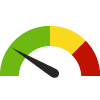



State: Ohio Pneumonia Vaccinations: Medicare Population
State: Ohio Pneumonia Vaccinations: Medicare Population
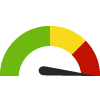



State: Ohio
Health / Maternal, Fetal & Infant Health
State: Ohio Babies with Low Birthweight
State: Ohio Babies with Low Birthweight



State: Ohio Babies with Very Low Birthweight
State: Ohio Babies with Very Low Birthweight



State: Ohio Breastfeeding at 8 Weeks
State: Ohio Breastfeeding at 8 Weeks


State: Ohio Chronic Health Condition(s) During Pregnancy
State: Ohio Chronic Health Condition(s) During Pregnancy


State: Ohio Ever Breastfed New Infant
State: Ohio Ever Breastfed New Infant


State: Ohio Gestational Depression
State: Ohio Gestational Depression


State: Ohio Gestational Diabetes
State: Ohio Gestational Diabetes


State: Ohio Gestational Hypertension
State: Ohio Gestational Hypertension


State: Ohio Infant Sleeps Alone
State: Ohio Infant Sleeps Alone


State: Ohio Infant Sleeps Alone on Recommended Surface
State: Ohio Infant Sleeps Alone on Recommended Surface


State: Ohio Infant Sleeps in Crib, Bassinet, or Play Yard
State: Ohio Infant Sleeps in Crib, Bassinet, or Play Yard


State: Ohio Infant Sleeps on Back
State: Ohio Infant Sleeps on Back


State: Ohio Infant Sleeps Without Objects in Bed
State: Ohio Infant Sleeps Without Objects in Bed


State: Ohio Pre-Pregnancy Depression
State: Ohio Pre-Pregnancy Depression


State: Ohio Pre-Pregnancy Diabetes
State: Ohio Pre-Pregnancy Diabetes


State: Ohio Pre-Pregnancy Hypertension
State: Ohio Pre-Pregnancy Hypertension


State: Ohio Preterm Births
State: Ohio Preterm Births



State: Ohio Prevalence of Intended Pregnancy
State: Ohio Prevalence of Intended Pregnancy


State: Ohio Prevalence of Unintended Pregnancy
State: Ohio Prevalence of Unintended Pregnancy


State: Ohio Prevalence of Unsure Intention Pregnancy
State: Ohio Prevalence of Unsure Intention Pregnancy


State: Ohio Stopped Breastfeeding Due to Resuming Work
State: Ohio Stopped Breastfeeding Due to Resuming Work


State: Ohio
Health / Mental Health & Mental Disorders
State: Ohio Age-Adjusted Death Rate due to Suicide
State: Ohio Age-Adjusted Death Rate due to Suicide



State: Ohio Depression: Medicare Population
State: Ohio Depression: Medicare Population




State: Ohio High School Students Who Attempted Suicide
State: Ohio High School Students Who Attempted Suicide



State: Ohio
Health / Nutrition & Healthy Eating
State: Ohio Teen Fruit Consumption
State: Ohio Teen Fruit Consumption


State: Ohio Teen Vegetable Consumption
State: Ohio Teen Vegetable Consumption



State: Ohio
Health / Older Adults
State: Ohio Adult Day Care Spending-to-Income Ratio
State: Ohio Adult Day Care Spending-to-Income Ratio


State: Ohio Adults 65+ with a Disability
State: Ohio Adults 65+ with a Disability


State: Ohio Adults 65+ with a Hearing Difficulty
State: Ohio Adults 65+ with a Hearing Difficulty


State: Ohio Adults 65+ with a Self-Care Difficulty
State: Ohio Adults 65+ with a Self-Care Difficulty


State: Ohio Adults 65+ with a Vision Difficulty
State: Ohio Adults 65+ with a Vision Difficulty


State: Ohio Adults 65+ with an Independent Living Difficulty
State: Ohio Adults 65+ with an Independent Living Difficulty








State: Ohio
Health / Other Conditions
State: Ohio Age-Adjusted Death Rate due to Kidney Disease
State: Ohio Age-Adjusted Death Rate due to Kidney Disease


State: Ohio Chronic Kidney Disease: Medicare Population
State: Ohio Chronic Kidney Disease: Medicare Population




State: Ohio Osteoporosis: Medicare Population
State: Ohio Osteoporosis: Medicare Population








State: Ohio
Health / Physical Activity



State: Ohio
Health / Prevention & Safety
State: Ohio Age-Adjusted Death Rate due to Falls
State: Ohio Age-Adjusted Death Rate due to Falls


State: Ohio Age-Adjusted Death Rate due to Firearms
State: Ohio Age-Adjusted Death Rate due to Firearms












State: Ohio
Health / Respiratory Diseases


State: Ohio Asthma: Medicare Population
State: Ohio Asthma: Medicare Population




State: Ohio COPD: Medicare Population
State: Ohio COPD: Medicare Population




State: Ohio
Health / Sexually Transmitted Infections
State: Ohio Age-Adjusted Death Rate due to HIV
State: Ohio Age-Adjusted Death Rate due to HIV


State: Ohio HIV/AIDS Prevalence Rate
State: Ohio HIV/AIDS Prevalence Rate


State: Ohio
Health / Tobacco Use
State: Ohio Cigarette Spending-to-Income Ratio
State: Ohio Cigarette Spending-to-Income Ratio


State: Ohio Teens who Smoke Cigarettes: High School Students
State: Ohio Teens who Smoke Cigarettes: High School Students



State: Ohio Tobacco Use: Medicare Population
State: Ohio Tobacco Use: Medicare Population



State: Ohio
Health / Weight Status
State: Ohio Obesity: Medicare Population
State: Ohio Obesity: Medicare Population



State: Ohio Teens who are Obese: High School Students
State: Ohio Teens who are Obese: High School Students



State: Ohio Teens who are Overweight
State: Ohio Teens who are Overweight



State: Ohio Teens who are Overweight or Obese
State: Ohio Teens who are Overweight or Obese



State: Ohio
Community / Crime & Crime Prevention
State: Ohio Age-Adjusted Death Rate due to Homicide
State: Ohio Age-Adjusted Death Rate due to Homicide



State: Ohio
Community / Demographics
State: Ohio Foreign Born Persons
State: Ohio Foreign Born Persons


State: Ohio Veteran Population
State: Ohio Veteran Population


State: Ohio
Community / Public Safety



State: Ohio
Community / Transportation
State: Ohio Community Spending on Transportation
State: Ohio Community Spending on Transportation




State: Ohio Households without a Vehicle
State: Ohio Households without a Vehicle



State: Ohio Mean Travel Time to Work
State: Ohio Mean Travel Time to Work



State: Ohio Workers Commuting by Public Transportation
State: Ohio Workers Commuting by Public Transportation




State: Ohio Workers who Drive Alone to Work
State: Ohio Workers who Drive Alone to Work



State: Ohio Workers who Walk to Work
State: Ohio Workers who Walk to Work



State: Ohio
Economy / Food Insecurity
State: Ohio Community Spending on Food
State: Ohio Community Spending on Food


State: Ohio
Economy / Housing & Homes
State: Ohio Community Spending on Housing
State: Ohio Community Spending on Housing


State: Ohio Home Renter Spending-to-Income Ratio
State: Ohio Home Renter Spending-to-Income Ratio


State: Ohio Homeowner Spending-to-Income Ratio
State: Ohio Homeowner Spending-to-Income Ratio


State: Ohio Overcrowded Households
State: Ohio Overcrowded Households






State: Ohio Utilities Spending-to-Income Ratio
State: Ohio Utilities Spending-to-Income Ratio


State: Ohio
Economy / Income
State: Ohio Gender Pay Gap
State: Ohio Gender Pay Gap



State: Ohio Median Household Income
State: Ohio Median Household Income



State: Ohio Per Capita Income
State: Ohio Per Capita Income



State: Ohio
Economy / Poverty
State: Ohio Children Living Below Poverty Level
State: Ohio Children Living Below Poverty Level



State: Ohio Families Living Below Poverty Level
State: Ohio Families Living Below Poverty Level



State: Ohio People 65+ Living Below Poverty Level
State: Ohio People 65+ Living Below Poverty Level



State: Ohio People 65+ Living Below Poverty Level (Count)
State: Ohio People 65+ Living Below Poverty Level (Count)

State: Ohio People Living Below Poverty Level
State: Ohio People Living Below Poverty Level




State: Ohio Young Children Living Below Poverty Level
State: Ohio Young Children Living Below Poverty Level



State: Ohio Youth not in School or Working
State: Ohio Youth not in School or Working



State: Ohio
Education / Childcare & Early Childhood Education


State: Ohio Home Child Care Spending-to-Income Ratio
State: Ohio Home Child Care Spending-to-Income Ratio


State: Ohio
Education / Educational Attainment
State: Ohio College Tuition Spending-to-Income Ratio
State: Ohio College Tuition Spending-to-Income Ratio


State: Ohio Community Spending on Education
State: Ohio Community Spending on Education


State: Ohio People 25+ with a Bachelor's Degree or Higher
State: Ohio People 25+ with a Bachelor's Degree or Higher



State: Ohio People 25+ with a High School Diploma or Higher
State: Ohio People 25+ with a High School Diploma or Higher



State: Ohio Student Loan Spending-to-Income Ratio
State: Ohio Student Loan Spending-to-Income Ratio




State: Ohio
Education / Student Performance K-12


State: Ohio 4th Grade Students Proficient in Math
State: Ohio 4th Grade Students Proficient in Math




State: Ohio 8th Grade Students Proficient in Math
State: Ohio 8th Grade Students Proficient in Math


State: Ohio
Environmental Health / Built Environment
State: Ohio Access to Parks
State: Ohio Access to Parks



